MARKET OVERVIEW
The global microplastic recycling market is a technologically sophisticated niche business within the broader waste management and environmental services sector. The industry will target one of the longest-lived and most complicated pollutants of the modern era — microplastics. Microplastics with their small size and inability to reach natural degradation will continue to pollute water bodies, terrestrial systems, and even the human body. As a response to growing environmental and regulatory pressures, the global microplastic recycling market will develop high-precision technologies and processes aimed at collecting, sorting, and reusing these small particles from many streams of waste. Rather than being a sub-segment of conventional plastic recycling, the global microplastic recycling market will expand into a standalone sector with high-precision technologies and cutting-edge scientific methods.
Its prime concern will not only be gargantuan plastic rubbish but will be particles that are typically invisible to the human eye but can wreak havoc on both ecosystems and human health. Techniques in this field will far exceed traditional mechanical recycling methods. Innovative techniques will employ chemical, biological, and high-tech filtering processes for pulling microplastics out of water supplies, sewage treatment plants, and factory outfalls. The character of this business will go beyond material recovery recycling. It will be at the forefront of creating circular loops where microplastics that were once irreversible pollutants will be used in industrial processes.
Innovation will find these particles potentially upgraded to second-generation raw materials that can be utilized in building materials, textiles, and other sectors open to incorporating recycled content into their value chain. The sector will find itself more prominently in sync with industries looking to achieve sustainability status through verified recycling and reinsertion of microplastics into manufacturing streams. Because regulatory markets will be ratcheted up, especially in Europe, North America, and parts of Asia, the global microplastic recycling market will be a compliance solution facilitator. Waste discharge policies, marine pollution policies, and corporate responsibility policies will channel demand to professional services that have the capability to handle microplastic pollution.
This demand will propel investments in research and technology improvements for improved recovery rates, efficiency, and profitability. Technologically sophisticated, this market will see continued advancements in detection technology that allows more precise identification and quantification of microplastics in complex waste matrices. Future recycling machines will utilize artificial intelligence, machine learning, and nanotechnology to further optimize the purification and separation process. Independent laboratories and recycling units that do nothing but microplastic recovery will become a standard, creating new industry standards and protocols that distinguish this segment from more conventional waste recycling. The global microplastic recycling market will increasingly establish a new narrative in environmental management, centering on responsibility not only for large-stream waste but also on pollution at the molecular level.
It will be brought into focus through alignments between environmental interests, governments, and businesses that want to eliminate the silent but pervasive damage of microplastics. The market direction will also closely be associated with scientific progress, policymaking, and public opinion of the larger implication of microplastic pollution. In the future, the global microplastic recycling market will not only be a reaction to cleaning up contamination but will be at the center of international sustainable resource management practices.
Global microplastic recycling market is estimated to reach $448.00 Million by 2032; growing at a CAGR of 7.2% from 2025 to 2032.
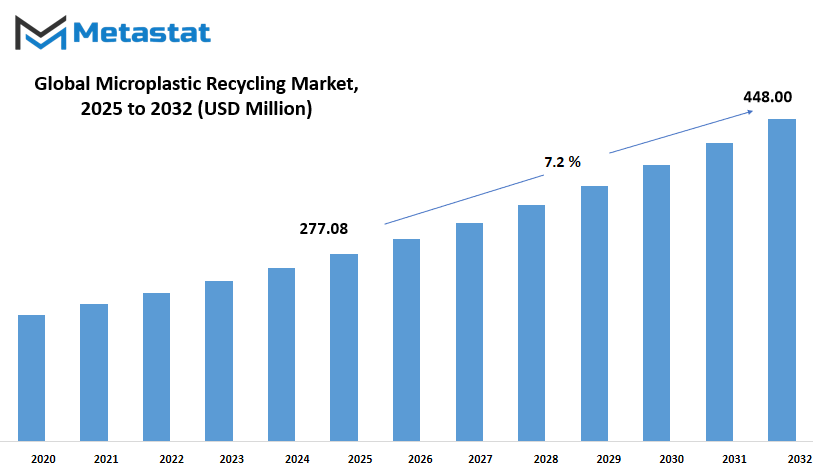
GROWTH FACTORS
The global microplastic recycling market is expected to grow steadily in the coming years, mainly due to rising awareness about the harmful effects of microplastics on the environment. As more people understand the damage microplastics cause to marine life, soil quality, and even human health, the demand for effective recycling solutions will naturally increase. People are starting to realize that ignoring this issue will only make things worse for future generations. This growing awareness will encourage both individuals and companies to support recycling efforts that focus on microplastics specifically, rather than just general plastic waste.
Another strong factor pushing this market forward is the increasing number of government regulations and policies aimed at better managing plastic waste. Governments around the world are setting stricter rules on how plastics are produced, used, and disposed of. These rules often include guidelines that encourage companies to invest in new recycling technologies. With such policies in place, companies have little choice but to focus on improving their recycling practices, which will further fuel growth in the global microplastic recycling market. These regulations will not only push businesses but will also motivate researchers to look for more advanced solutions that make recycling microplastics easier and more efficient.
However, there are still challenges that could slow down this progress. One of the biggest problems is the difficulty and high cost of separating microplastics from other types of waste. Unlike larger plastics, microplastics are tiny and often mixed with other substances, making them hard to isolate. This process requires advanced technology that is not widely available yet. As a result, the cost of recycling microplastics remains high, which discourages some companies from adopting these solutions on a large scale. Another issue is the lack of sufficient recycling facilities that are specifically designed to handle microplastics. Without the proper infrastructure, it is hard to scale these efforts and achieve meaningful results.
Looking ahead, there are still good reasons to be hopeful. Ongoing advancements in technology focused on sorting and processing microplastics will play a key role in overcoming current limitations. These new technologies promise to make recycling more efficient and less expensive, which will likely attract more investment into this area. As these innovations become more common, they will help improve recycling rates and reduce environmental damage. Over time, these improvements will open up new opportunities for growth and make the global microplastic recycling market a more vital part of the solution to plastic pollution.
MARKET SEGMENTATION
By Product
The global microplastic recycling market is gaining more attention as the world becomes increasingly aware of the harmful effects microplastics have on the environment and human health. Microplastics, which are tiny plastic particles usually less than five millimeters in size, have found their way into oceans, rivers, soil, and even the air we breathe. As a result, there is a growing demand for better methods to collect, treat, and recycle these particles. Over time, the global microplastic recycling market is expected to grow steadily, driven by advancements in technology, rising environmental concerns, and stricter regulations put in place by governments worldwide.
Looking ahead, the future of this market seems likely to focus on creating more efficient and cost-effective recycling solutions. This is because traditional recycling methods are not always suitable for microplastics due to their small size and widespread distribution. New technologies are being developed to identify and capture these particles from various environments, including water treatment plants and industrial waste streams. These methods are expected to become more precise and less expensive as time goes on, encouraging more industries to adopt them. This will not only help protect ecosystems but also create new opportunities for businesses in the recycling sector.
The global microplastic recycling market by product is further segmented into Primary and Secondary recycling. Primary recycling usually refers to processes where waste plastic is recycled into products with similar functions to the original material. This method is often seen as the most desirable because it keeps the material’s quality intact. Secondary recycling, on the other hand, involves breaking down plastic waste and reforming it into new materials, which may not have the same quality as the original but are still useful. In the future, both primary and secondary recycling methods will likely improve through the use of advanced machinery, better sorting techniques, and chemical innovations that allow for more effective separation and reprocessing of materials.
Furthermore, as more countries take steps to tackle the pollution problem, companies involved in the global microplastic recycling market will benefit from supportive policies, funding, and partnerships. Public awareness campaigns and corporate responsibility programs will also push industries to rethink how they handle plastic waste. It is expected that recycling microplastics will become an important part of the larger movement toward sustainability. Companies that invest early in research and innovation will likely lead this market in the future, helping to build a cleaner and healthier planet.
By End Use Industry
The global microplastic recycling market is expected to see steady progress in the future as more industries begin to understand the serious effects of microplastics on the environment and human health. Microplastics are small plastic particles that are hard to detect but cause significant harm over time. As awareness grows, so does the need for effective recycling methods that can help manage and reduce the amount of microplastic waste entering the environment. Governments, organizations, and companies are likely to support new solutions through funding, regulations, and innovations. This support will drive the market forward and create opportunities for businesses involved in recycling technologies.
Different industries will play a key role in shaping the direction of this market. In the packaging industry, for example, the demand for sustainable solutions is rising fast. Companies are looking for ways to manage the waste they produce, and recycling microplastics will soon become a standard practice rather than an optional one. This change will help reduce pollution and meet the expectations of consumers who are becoming more environmentally conscious.
Agriculture is another area where microplastic recycling will gain importance. Plastic waste is often found in soil due to farming tools, packaging, and fertilizers that contain plastic elements. Recycling efforts will aim to reduce this waste, helping improve soil health and reduce harm to crops. Over time, this will support better farming practices and more sustainable agriculture.
Consumer goods will also influence the global microplastic recycling market. Products like cosmetics, cleaning supplies, and household items often contain microplastics. As rules around their use become stricter, companies will seek out recycling solutions to handle these materials responsibly. This will not only protect the environment but also strengthen brand reputation and customer trust.
Textiles are another major contributor to microplastic pollution through synthetic fibers released during washing. Recycling solutions will focus on capturing and reusing these fibers, encouraging brands to adopt cleaner production methods. Automotive and transportation industries will also push for better recycling as they rely on plastics for parts and interiors. Managing waste from this sector will become a bigger priority.
Finally, building and construction will require solutions to handle plastic waste from insulation, piping, and other materials. Recycling will help keep construction more sustainable while reducing long-term environmental impact. Other industries will follow these trends, and the combined efforts will shape a future where microplastic recycling is not just necessary but expected as part of responsible business practices.
|
Forecast Period |
2025-2032 |
|
Market Size in 2025 |
$277.08 million |
|
Market Size by 2032 |
$448.00 Million |
|
Growth Rate from 2025 to 2032 |
7.2% |
|
Base Year |
2024 |
|
Regions Covered |
North America, Europe, Asia-Pacific Green, South America, Middle East & Africa |
REGIONAL ANALYSIS
Based on geography, the global microplastic recycling market is divided into North America, Europe, Asia-Pacific, South America, and Middle East & Africa. The global microplastic recycling market is expected to change significantly in the coming years. As awareness grows about the dangers of microplastics on the environment and human health, more countries are pushing for solutions that will reduce this form of pollution. Microplastics have been found in oceans, rivers, soil, and even the air we breathe, and this problem is no longer something people can ignore. Governments, businesses, and environmental groups are now looking at recycling as a key way to manage this crisis. Although recycling microplastics is a challenge due to their small size and the difficulty in collecting them, advancements in technology will make this task easier and more efficient in the future.
Different regions across the world will play a role in shaping this market. North America will continue to make efforts, especially through the U.S., Canada, and Mexico, as these countries already have strict environmental regulations and growing public support for green initiatives. Europe, with countries like the UK, Germany, France, and Italy, will likely lead in research and development because of its strong focus on sustainability and innovation in waste management. The Rest of Europe will follow these major economies in adopting new methods. In Asia-Pacific, nations such as India, China, Japan, and South Korea are expected to invest more in recycling solutions, as these countries face serious pollution problems but also have the technological capacity to create change. The Rest of Asia-Pacific will gradually catch up as these advancements become more accessible and affordable.
In South America, Brazil and Argentina will focus on creating policies that promote recycling and reduce plastic waste. These efforts will expand to the Rest of South America as awareness spreads and governments take stronger action. The Middle East & Africa region, including GCC Countries, Egypt, South Africa, and others, will also work towards developing recycling programs. While this region may take longer to build the infrastructure needed, international cooperation and investment will help speed up progress.
Looking ahead, the global microplastic recycling market will not only help clean up the planet but will also create opportunities for businesses focused on green technologies. As methods become more advanced and effective, industries will adopt recycling processes as part of their regular operations. The future will likely bring innovative solutions that make it possible to recover even the tiniest plastic particles. This will lead to a cleaner environment and open up new possibilities for how materials are reused and recycled on a global scale.
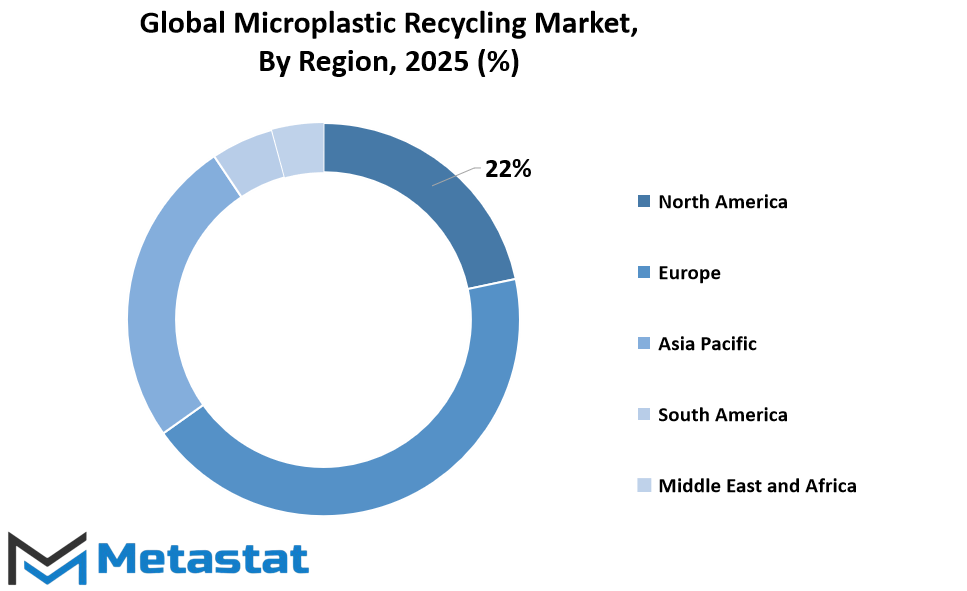
COMPETITIVE PLAYERS
The global microplastic recycling market is gradually gaining more attention as the world becomes more aware of the harm caused by microplastics. These tiny plastic particles often end up in the oceans, rivers, and even the air we breathe. Over time, people have realized that simply reducing plastic use is not enough. Recycling these small particles is necessary to reduce their long-term impact on the environment. This market will likely expand as more countries and companies understand the need for better recycling systems. In the future, stricter regulations and growing consumer demand for cleaner products will push industries to adopt more advanced recycling solutions.
Key players in the global microplastic recycling market, such as PlanetCare, ECOFARIO GmbH, Carbios, and PureCycle Technologies, Inc., are already working on solutions that can make a difference. They are focused on developing technologies that can capture, clean, and recycle microplastics from various sources, including water treatment plants and industrial waste. Companies like Ioniqa Technologies B.V. and Calyxia are creating methods to break down microplastics at the molecular level, offering hope for a cleaner future. Meanwhile, Ocean Diagnostics, Inc. and OceanWorks International are concentrating on solutions that target microplastics in oceans, aiming to clean up existing pollution and prevent more from entering the waterways.
Matter, Polygonesystems, and Empower AS are also contributing with innovative ideas. Their technologies focus on identifying microplastics in different environments and finding efficient ways to collect and recycle them. These efforts will help shape the future of the global microplastic recycling market as they show how science and technology can solve difficult environmental problems. As more partnerships form between these companies and governments, the pace of progress will likely increase. Consumers are also becoming more informed and are starting to demand products made with recycled materials, which encourages businesses to focus on sustainable practices.
Looking ahead, the market will not only grow in size but also improve in quality. Technologies will become more precise, making it easier to separate microplastics from other waste. This will lead to higher recycling rates and a cleaner environment overall. The global microplastic recycling market will play a key role in shaping a future where plastic waste no longer causes so much harm. These companies will continue to drive innovation and inspire others to follow. This movement will create opportunities for new businesses to join and for more people to support eco-friendly solutions through their choices and actions.
Microplastic Recycling Market Key Segments:
By Product
- Primary
- Secondary
By End Use Industry
- Packaging
- Agriculture
- Consumer goods
- Textile
- Automotive & Transportation
- Building & Construction
- Others
Key Global Microplastic Recycling Industry Players
- PlanetCare
- ECOFARIO GmbH
- Carbios
- PureCycle Technologies, Inc.
- Ioniqa Technologies B.V.
- Calyxia
- Ocean Diagnostics, Inc.
- OceanWorks International
- Matter
- Polygonesystems
- Empower AS
WHAT REPORT PROVIDES
- Full in-depth analysis of the parent Industry
- Important changes in market and its dynamics
- Segmentation details of the market
- Former, on-going, and projected market analysis in terms of volume and value
- Assessment of niche industry developments
- Market share analysis
- Key strategies of major players
- Emerging segments and regional growth potential



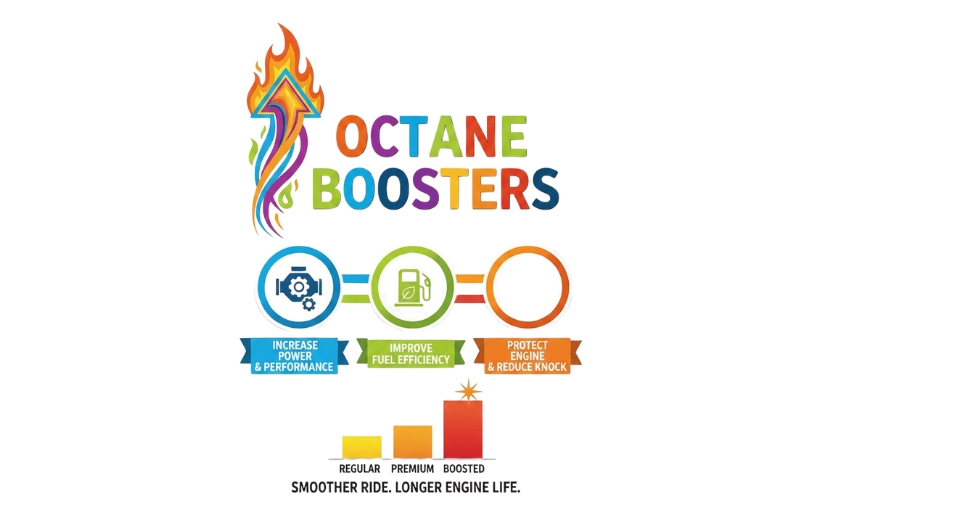
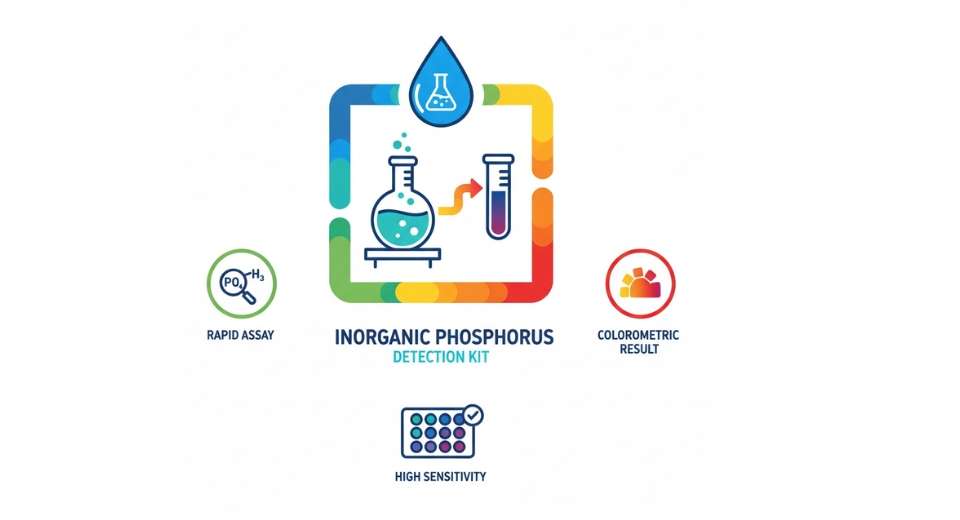
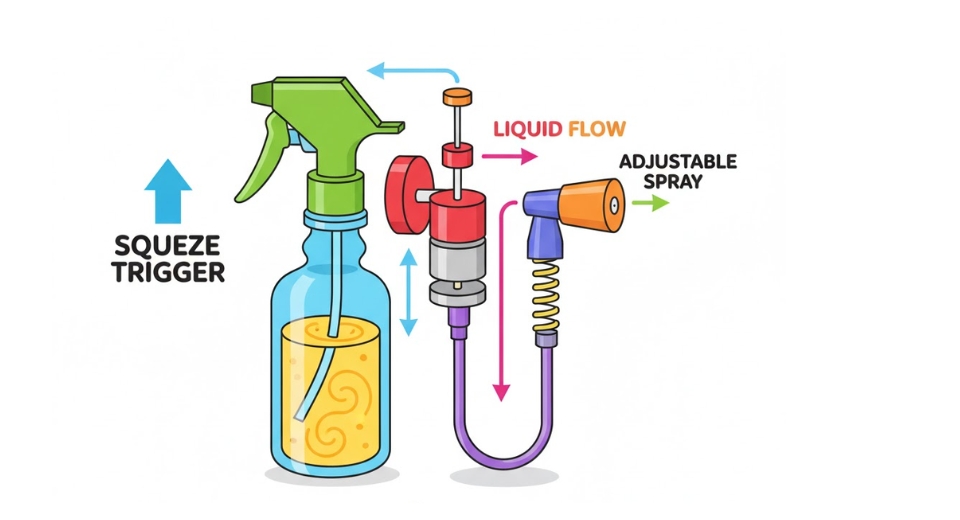
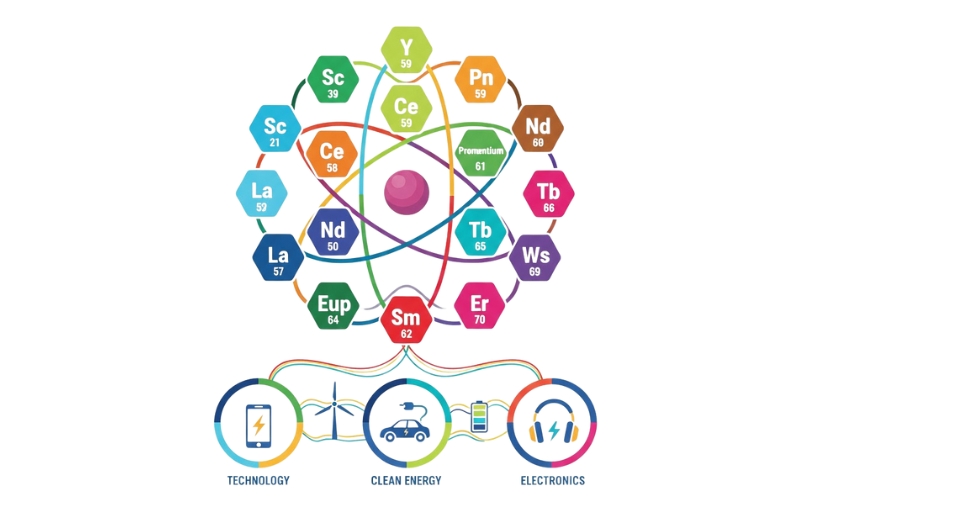

 US: +1 3023308252
US: +1 3023308252






